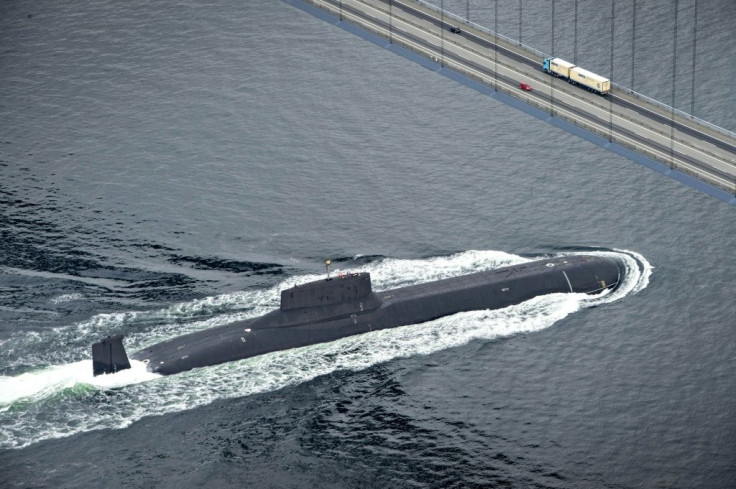Will Russia Deploy Its Super Weapon 'Poseidon' Against Ukraine?
KEY POINTS
- Military analyst H I Sutton thinks the Poseidon is not ready to be used yet
- The submarines to carry it are expensive and a huge investment for Russia
- A report said a weapon that takes time to reach its target is not efficient
As the Russian invasion of Ukraine enters its second week, the world has its eyes trained on Kremlin and its superior military hardware used to pound Kyiv and Kharkiv.
However, as Russian President Vladimir Putin orders his nuclear deterrent forces to be on alert, military watchers across the globe are concerned as to whether Russia would deploy its most-feared weapon, "Poseidon," a nuclear-capable underwater vehicle (UUV).
Poseidon, an 80-foot-long nuclear-powered submersible robot, can reportedly travel autonomously across thousands of miles, detonate outside an enemy coastal city, and destroy it by generating a tsunami. Though it is slower compared to an intercontinental ballistic missile, the Poseidon is unstoppable. The underwater trials of the nuclear propulsion unit of the Poseidon drone were held last year.
However, analysts like H I Sutton, who specializes in submarines and sub-surface systems, believe Putin has not deployed Poseidon yet. Reason: the system is not ready yet, he said in an article on Naval News.
That said, the existence of Poseidon does raise concerns for nuclear stability in the near future. "It changes the shape of nuclear deterrence and will become one of Russia’s most feared weapons," he claims.
Though the nuclear reactor gives the weapon essentially unlimited range and operational flexibility, the reactor is likely to be built for limited usage. "It does not appear that it is intended for sustained use, which will shape the way it can be used. This fits with it being a weapon shot in anger, rather than a prototypical underwater drone," the Naval News article added.
Also, Poseidon is small by nuclear submarine standards and its technology does not allow it to be particularly stealthy. Besides, it may also leave a trail of radiopacity, which would make it easy to track it, especially during trails.
The weapon is designed to be carried by submarine in a sealed tube. However, such submarines are highly expensive and a massive investment for the Russian Navy. "This suggests that it is not designed to be forward-deployed as a mine, waiting to detonate in an enemy port," the report said.
Sutton added that though Poseidon’s day will come, currently none of the submarines to carry it are operational. "It could be speculated that Russia could attempt a launch if desperate enough. But, it is currently nowhere near the threat level of traditional submarine-launched missiles," the article added.
Poseidon for context https://t.co/7LTCy2No2q
— H I Sutton (@CovertShores) March 3, 2022
According to an earlier report on Poseidon that appeared in The National Interest, Russia claims that Poseidon is a retaliatory weapon that would revenge a U.S. first strike even if American missile defenses were capable of stopping hundreds of Russian ICBMs.
"But even in the unlikely event that the U.S. could intercept 500 or more Russian ballistic missiles, a delivery system that could take days or weeks to reach its target seems hardly an efficient deterrent."

© Copyright IBTimes 2024. All rights reserved.





















